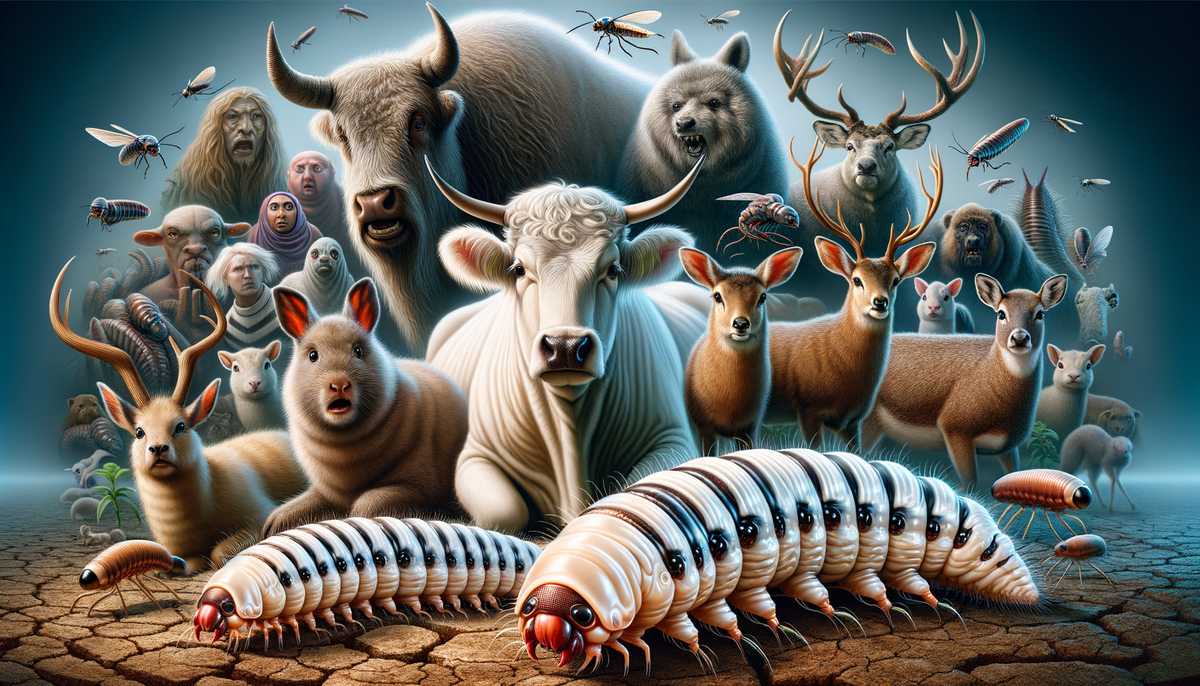Screwworm Infestation: A Looming Threat to Livestock and Wildlife
Explore the significant threat the New World Screwworm poses to livestock and wildlife, and learn how to manage and prevent infestations effectively.

Screwworm Infestation: A Looming Threat to Livestock and Wildlife
The New World Screwworm (NWS), scientifically known as Cochliomyia hominivorax, is a devastating parasitic fly species that poses a significant threat to livestock, wildlife, and occasionally humans. As a trending topic in the agricultural and wildlife sectors, understanding the biology, impact, and control measures of this invasive pest is crucial for professionals in these fields.
Biology and Lifecycle of the Screwworm
The New World screwworm is a species of parasitic fly in the Calliphoridae family, commonly known as blowflies. Unlike most other fly species that feed on dead tissue, screwworm larvae are obligate parasites that specifically feed on the living flesh of warm-blooded animals. This unique feeding behavior makes them particularly dangerous and destructive.
The name "screwworm" is derived from the larvae's physical appearance, which includes small spines on each body segment, resembling the threads of a screw. These spines allow the larvae to anchor themselves firmly in the host's tissue as they feed.
The lifecycle of screwworm involves several stages:
- Adult female flies lay eggs near wounds or natural openings on living animals.
- The larvae hatch and immediately begin feeding on living tissue.
- As they feed, the larvae burrow deeper into the flesh, perpendicular to the skin surface, mimicking a screw being driven into the host's body.
The destructive power of screwworms lies in their ability to consume healthy living tissue alongside decaying tissue. Their scientific name, hominivorax, translates to "man-eating," reflecting their voracious appetite.
Disease and Impact of Screwworm Infestation
Screwworm infestation causes a condition known as myiasis, which is the infestation of maggots in the living tissue of host animals. This condition can manifest in various situations, from wounds due to agriculture practices such as branding and castration, to injuries like cuts from barbed wire, and natural openings like the navels of newborn animals.
As the larvae feed on wound fluids and tissue, they cause extensive and progressive damage. Larger wounds created by these larvae often attract additional female flies, leading to massive infestations that can be fatal to the host animal. While primarily affecting livestock such as cattle, screwworm infestations can also impact wildlife and, less commonly, birds and humans. The economic impact on the livestock industry is severe, including animal deaths, decreased productivity, and increased control costs.
Classification and Related Species
Screwworm belongs to the genus Cochliomyia in the family Calliphoridae. The species of primary concern is Cochliomyia hominivorax, the New World screwworm fly. This designation distinguishes New World screwworms from their Old World counterparts found in other regions.
The Centers for Disease Control and Prevention (CDC) categorize the New World screwworm as a parasitic worm species that causes myiasis by feeding on live tissue. Despite the term "worm," it is in fact a fly in its larval stage.
Screwworm is considered a significant invasive species, prompting extensive control and eradication efforts due to its harmful impact on livestock and wildlife populations.
Practical Takeaways for Professionals
For professionals in the agricultural and wildlife management sectors, several key takeaways emerge:
- Implementing rigorous monitoring systems to detect and manage screwworm infestations early can prevent widespread outbreaks.
- Understanding the screwworm lifecycle and behavior is crucial for developing effective countermeasures.
- Collaborating with governmental and international health organizations can enhance control and eradication efforts.
Additionally, advancements in genetic and biological control methods offer promising new approaches to managing screwworm populations.
Relating to Our Expertise
Our company, with a deep-rooted expertise in pest control and agricultural consulting, is well-equipped to guide and assist farming communities and wildlife management professionals in addressing screwworm challenges. We offer a suite of services, from pest management strategies to training programs that empower local teams to efficiently tackle screwworm infestations.
Call to Action
For more information on controlling and preventing screwworm outbreaks, or to learn about our comprehensive range of pest control services, contact us today. Let us help you protect your livestock and wildlife from this destructive pest.




